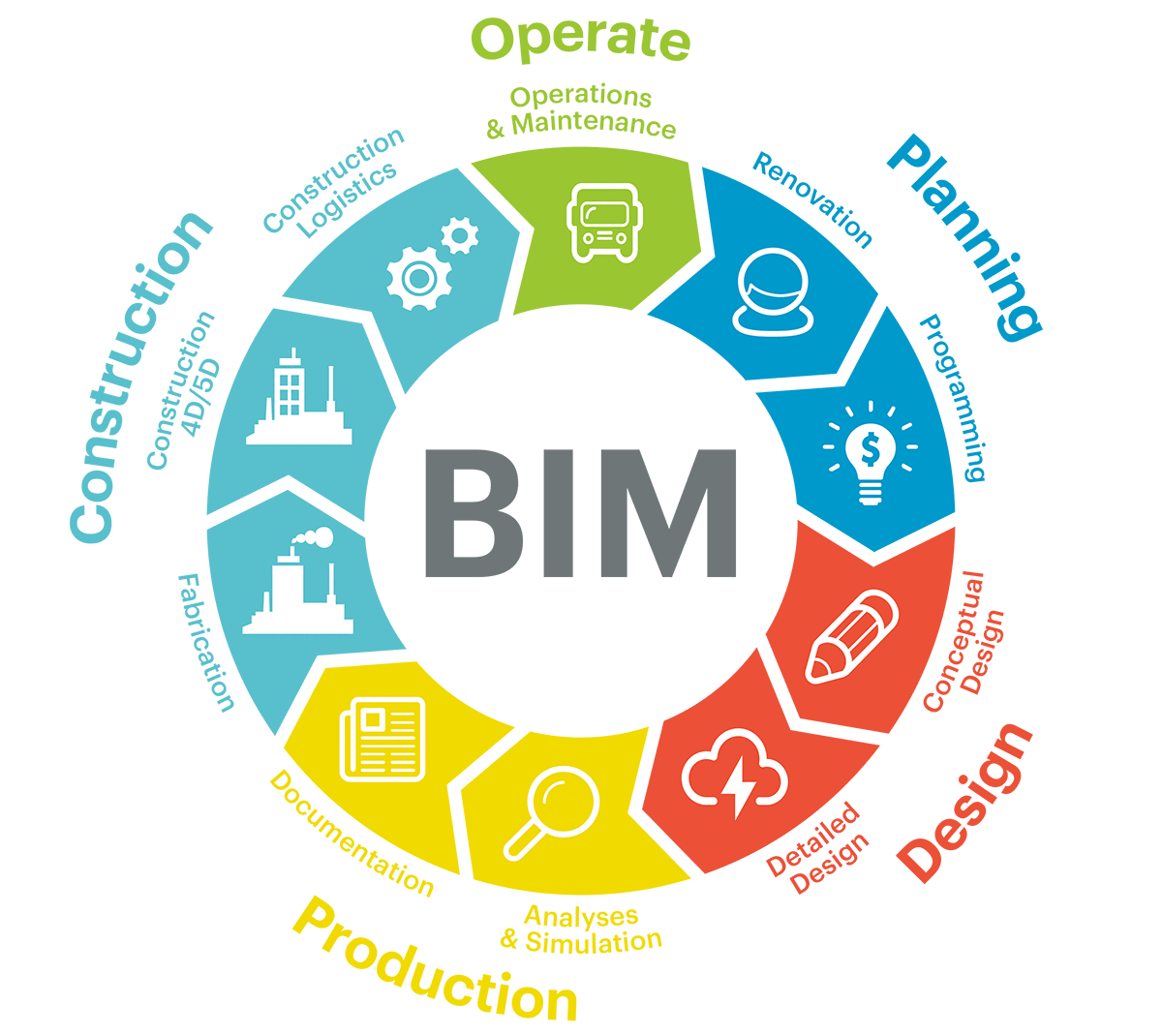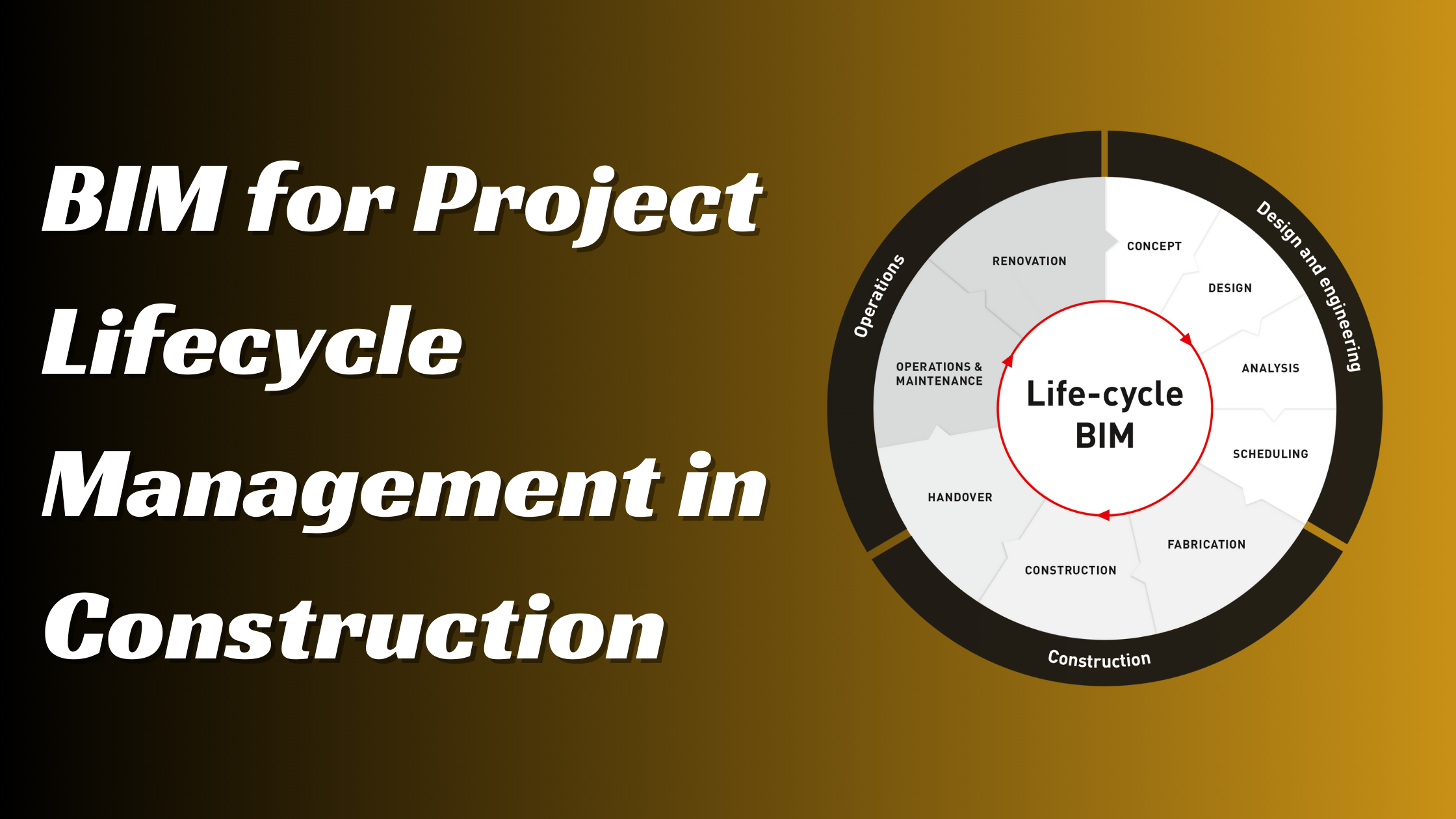BIM for Project Lifecycle Management in Construction
- 1 What is BIM?
- 2 The Benefits of BIM in Construction
- 2.1 Enhanced Collaboration
- 2.2 Improved Accuracy
- 2.3 Efficient Project Management
- 2.4 Cost Savings
- 2.5 Enhanced Visualization
- 3 BIM Throughout the Project Lifecycle
- 4 Implementing BIM in Your Projects
- 4.1 Choosing the Right Software
- 4.2 Training and Education
- 4.3 Teaming up with Partners
- 4.4 Maintaining the Model
- 5 Challenges of BIM
- 5.1 Initial Costs
- 5.2 Complexity
- 5.3 Data Management
- 6 Conclusion
Building Information Modeling BIM is a unique advantage in the realm of development. It was not only a device for planning structures; widely inclusive permission improves each period of a structure project. From first planning to final demolition, BIM helps deal with the intact lifecycle of a building. This blog explored how BIM could streamline learning management, improve efficiency, and save costs through the building lifecycle, with insights on how a Freelance Estimator can leverage BIM for better results.
What is BIM?
BIM stands for Building Information Modeling. It’s an appendage delegate of a building’s natural and operative characteristics. Think of it as a 3D model that includes the design and dated materials, dimensions, and single systems inside the building. BIM goes beyond formal blueprints by incorporating time and cost aspects into the model.
The Benefits of BIM in Construction
Enhanced Collaboration
BIM encourages coalition among all stakeholders. Planners, specialists, project workers, and clients could work on a similar model to guarantee that everybody agrees. This shared model helps identify compelling conflicts early on and facilitates communication.
Improved Accuracy
Using BIM could avoid errors in the pattern and building phases. The model is detailed and precise, reducing the chances of mistakes. Any changes made to the model are updated for all users, ensuring everyone has the most modern-day information.
Efficient Project Management
BIM helps deal with the learning expeditiously by providing a detailed Ameline and cost estimates. This allows for elaborate planning and resourcefulness allocation, minimizing delays and budget overruns.
Cost Savings
One meaningful advantage of BIM is cost savings. The detailed model helps in correct corporeal assessment and reduces waste. By identifying effectiveness issues, BIM also prevents expensive recaps during the building phase.
Enhanced Visualization
BIM offers 3D visualizations that make it easier to learn the project. Stakeholders can see what the finished building looked like before the building even began. This helps in making informed decisions and avoiding changes later on.
BIM Throughout the Project Lifecycle

Planning and Design
The planning phase is where BIM shines the most. Architects and designers use BIM to make detailed models of the building. This model includes data on the building’s layout, materials, and systems. It helps visualize how clear-cut elements of the building work together. During the pattern phase, BIM allows for quick changes and updates.
If a designer wants to alter a room’s layout, the changes can be made in the model, and all related documents and plans have been updated automatically. This reduces the time spent on revisions and ensures accuracy.
Pre Construction
Before building begins, BIM helps in planning the logistics. It provides a detailed schedule, corporeal lists, and cost estimates. This data helps in budgeting and scheduling, ensuring everything is in place before the building starts. BIM also helps identify effectiveness problems before they occur. Working with CAD Drafting Company can further enhance the effectiveness of BIM by providing accurate and detailed drafts that integrate seamlessly with BIM models.
For example, a clash between the plumbing and exciting systems can be detected in the model, allowing for adjustments before the building begins.
Construction
During the building phase, BIM continues to be valuable. Contractors use the model to guide the building process, ensuring everything is built according to the design. The model also helps track and manage resources in advance.
BIM can be integrated with other technologies, such as drones and sensors, to create an online platform for the building site. This consolidation provides period data on the project’s advance and helps maintain type control.
Renovation and Demolition
BIM also plays a role in the service and hideout phases. If the building needs to be renovated, the model provides a detailed understanding of the existing structure, making planning and activating the changes easier. BIM helps plan the ferment for demolition and ensures it’s done safely and efficiently. The model provides data on the building’s structure, the basis for demolition planning.
Implementing BIM in Your Projects
Choosing the Right Software
Single BIM parcel options are available, each with its features and capabilities. Choosing the suitable parcel depends on your project’s needs and your team’s expertise. Some standard BIM packages include Autodesk Refit, ArchiCAD, and Bentley BIM.
Training and Education
Successful execution of BIM requires training. Ensure your team is well-trained in using BIM parcel and understands how to integrate it into the learning workflow. This training helped maximize BIM’s benefits and ensure an intact transition.
Teaming up with Partners
BIM is most proficient when all partners are involved. Encourage coalition among architects, engineers, contractors, and clients. This coalition ensures that everyone has an approach to the same data and can work together effectively.
Maintaining the Model
Once the learning is underway, it’s based on the BIM model. Keep it updated with any changes or modifications. This ensures the model is stiff, correct, and utilizes the learning lifecycle.
Challenges of BIM
Initial Costs
Implementing BIM could need meaningful first costs, including parcel purchases and training. However, these costs are often bred by the semipermanent benefits and savings.
Complexity
BIM can be complex, particularly for those new to the technology. It requires a learning curve and a shift in how projects are managed. However, with training and support, these challenges can be overcome.
Data Management
Managing the large sum of data in a BIM model can be challenging. It requires efficacious data direction practices and tools to ensure the data is correct and accessible. Integrating MEP Estimating Services can enhance data accuracy by seamlessly incorporating detailed mechanical, electrical, and plumbing estimates into the BIM model.
Conclusion
BIM is revolutionizing the learning lifecycle direction in building by enhancing collaboration, improving accuracy, and saving costs. BIM provides an all-encompassing admittance to managing building projects, from the planning and pattern phases to construction, operation, and demolition.
By adopting BIM, you could streamline processes, eliminate declaration errors, and make informed decisions throughout the intact lifecycle of a building. While there are challenges to implementing BIM, the benefits far outweigh the drawbacks, making it a quantitative tool for modern-day building projects.

















